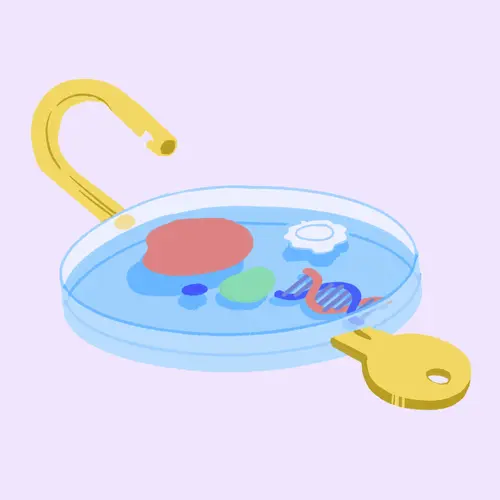When people talk about lupus, they usually mean systemic lupus erythematosus (SLE), which is about 70% of lupus cases. SLE affects your muscles, joints, and organs like your kidney, brain, nervous system, and heart.
Treating a flare of your SLE can help prevent a lot of the pain. And if you still have pain, there are many things you can do to manage it.
Joint Pain
Lupus-triggered swelling in and around your joints can lead to several painful conditions:
Arthritis. Up to 90% of people with SLE will have arthritis -- the swelling of the lining of joints -- at some point. Your doctors might call it “inflammatory arthritis.” You’re most likely to have it in your fingers and wrists, but it can also reach your elbows, knees, ankles, and toes. Your joints might feel tender and warm. You also might have pain in the joint itself.
Lupus-related arthritis can be similar to rheumatoid arthritis, but your symptoms likely won’t be as severe, with less swelling and stiffness in the morning. You’re also less likely to have permanent joint damage.
Tendinitis. This happens when the tough tissues that attach your muscles to your bones get inflamed. About 10% of lupus cases lead to tendinitis, which can trigger pain and stiffness in your joints. The condition is most common in your fingers, elbows, rotator cuff (shoulder), and heels.
Bursitis. Lupus can cause swelling in your bursae, the fluid-filled sacs that lubricate the tissues and bones that move your joints. It’s most likely to show up in your elbows, shoulders, and fingers.
Carpal tunnel syndrome. This can happen when inflammation puts too much pressure on the central nerve in your wrist. Your hands and fingers might hurt or feel numb or tingly.
Muscle Pain
Pain and aching in your muscles is common with lupus. You’ll usually feel it in your thighs and upper arms. In about 5%-10% of people with lupus, the disease advances to myositis, which can cause painful muscle inflammation, especially in your shoulders, upper arms, hips, and thighs.
Joint and Muscle Pain Treatments
The main treatment for both muscle and joint pain from lupus is nonsteroidal anti-inflammatory drugs – aka NSAIDs – such as ibuprofen or naproxen sodium.
Joint rest and physical therapy can ease pain caused by tendinitis and myalgia. If they don’t work well, your doctor might prescribe a low dose of prednisone, a type of steroid. Myositis usually is treated with higher doses of steroids, and sometimes with medications called DMARDs (disease-modifying antirheumatic drugs).
Steroids can tame swelling and pain. They can have long-term side effects, though, so your doctor will balance out the need and dosage accordingly. They also should be used only to calm active flare-ups.
You might want to look into alternative treatments, too. For example, acupuncture, where tiny needles are placed just under the skin, can ease muscle pain. Check with your doctor first, though, to make sure a treatment would be a good fit for your body and any meds you’re taking. This includes if you want to try any herbal treatments or nutrition supplements such as fish oil.
Managing Joint and Muscle Pain on Your Own
Along with your doctor’s treatment recommendations, there are many ways to soothe lupus pain at home.
- Sleep. When you get tired and don’t get enough rest, your pain can get worse. Set a regular schedule to make sure you’re getting your sleep.
- Bring the heat. It can be your best friend if you have lupus pain. You can press a warm towel on the painful area or take a long bath or shower.
- Switch up body positions that might trigger pain. Avoid sitting still for too long, like working at your desk or watching TV.
- Keep moving. Even just a few minutes a day can help loosen your joints and stretch your muscles. Be sure to check in with your doctor or physical therapist before starting any new plan.
- Practice relaxation techniques. Try low-impact yoga, tai chi, or mindfulness meditation. They can help take your mind off pain and enjoy the present moment.
Bone Pain
Less common than muscle and joint problems is a lupus-related condition called avascular necrosis, or AVN. It happens when blood doesn’t flow to a part of your bone, which triggers a buildup of pressure. Taking high doses of steroids to treat other symptoms is a common cause.
The first signs of AVN can be pain in your knees, hips, or shoulders. This can lead to stiff joints and muscle spasms. Your pain may increase as the condition advances, especially at night.
NSAIDs will probably be your doctor’s first go-to meds to relieve pain. Advanced cases of AVN will likely need to be treated with surgery, such as with artificial joint replacement, to ease pain and help restore movement.
Oral Pain
Painless sores in your mouth sometimes can show up because of the meds you’re taking. This happens with up to 40% of people who have SLE. Oral lesions also can happen from the disease itself, though, and might be painful. They’re most likely to appear inside your cheeks, on your lower lip, or the roof of your mouth. You’ll need to let your doctor know right away.
It’s crucial to know the cause of the lesion before trying to treat it. The meds used to treat your lupus can also help control ulcers. Your doctor might prescribe steroids or lidocaine that you apply to the ulcer to help control pain.
The best way to stay on top of lupus-related oral health is to visit your dentist regularly.

